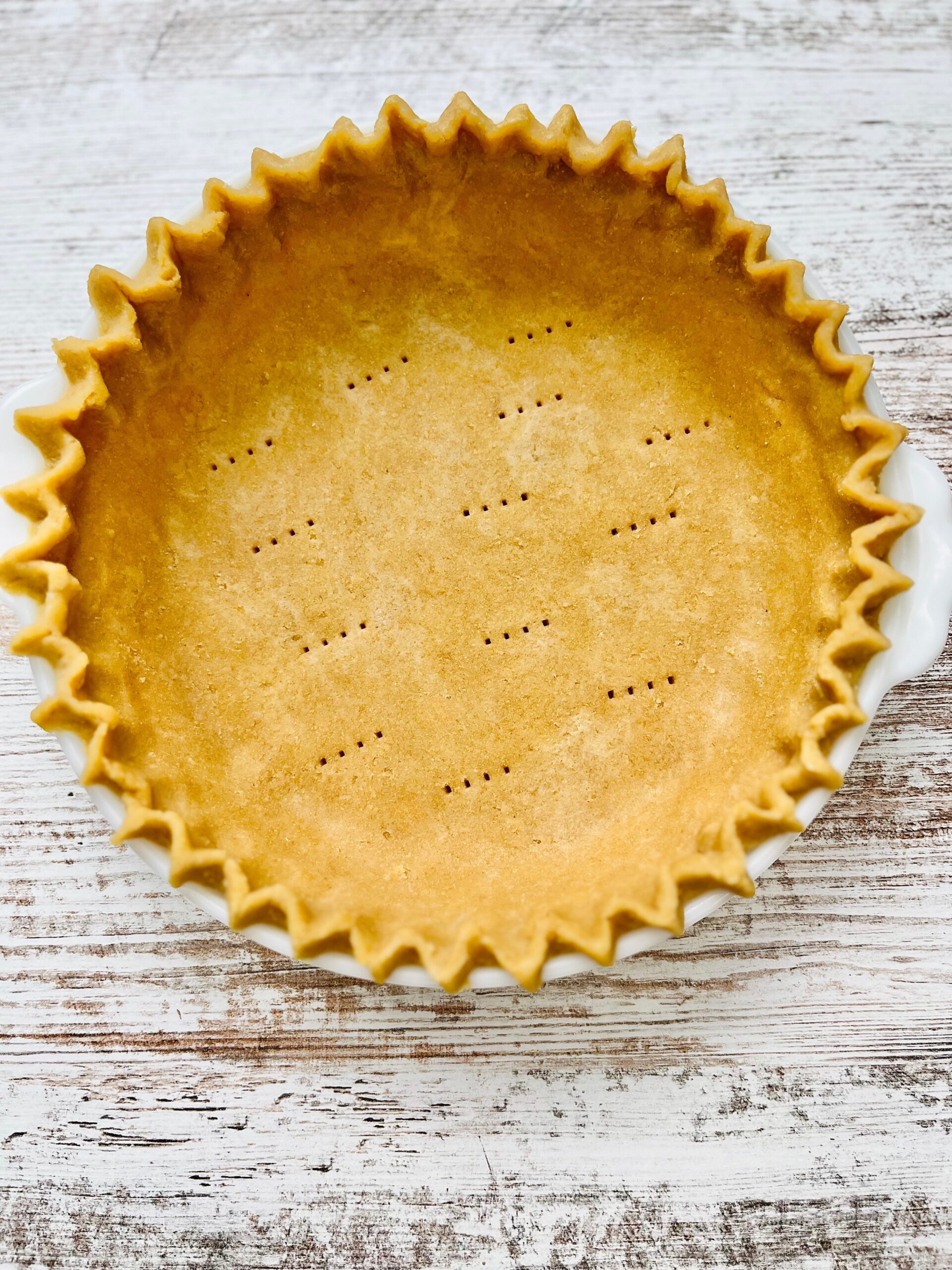Measure wheat berries and run through mill on fine setting to grind flour. You may use a soft wheat berry or ancient grain of your choice. Experiment with different combinations to discover what flavors you like best. I prefer to use a mix of soft white wheat and Khorasan.
Add ½ teaspoon of salt to the fresh milled flour and mix with a spoon.
Add 76 grams of cold unsalted butter and 76 grams of cold lard to flour mixture. If you don’t have lard, you may substitute with unsalted butter. It’s very important to ensure the butter and lard are both very cold.
Use a pastry blender to cut-in the cold butter and lard into the freshly milled flour mixture. Continue until it develops a texture that looks similar to cornmeal.
Add 2 teaspoons of cold apple cider vinegar to the mixture. Mix with a dough hook.
Add 5-7 Tablespoons of ice-cold water to the mixture one at a time. Mixing with a dough hook after each tablespoon is added. Add enough liquid for the mixture to come together in one cohesive ball. The moisture in your environment and will impact how much water you need to add. Once you start to feel an increase resistance mixing with the dough hook, continue mixing with clean hands until a ball is formed.
Cover and place into the refrigerator for at least 30 minutes. This rest time is important to allow the wheat bran and germ from the freshly milled flour to soak up the liquid and soften.
Remove from dough from refrigerator and cut in half. Form each half into a disc. Then, roll out into a 12-inch circle on a non-stick work surface. Resist the urge to add more flour. If the dough is sticking, roll between two pieces of parchment paper or plastic wrap. An additional option, is to roll between a silicone non-stick work surface and plastic wrap. Repeat with second half of the pie crust.
Cover airtight and place in the refrigerator for at least 1 hour to overnight. It’s important to ensure the dough it cold throughout.
Generously, grease an 9 inch pie plate with unsalted butter or lard. I prefer butter.
Remove cold dough from the refrigerator and allow it to sit at room temperature for about 5 minutes.
Peel the rolled dough from the non-stick covering and form into pie plate. If it starts to crack let it sit for a few minutes more to slightly soften up. Then, pinch the crack back together and continue forming into pie plate.Tip: You want it to be cold. However, if the dough it too cold it becomes fragile and will crack. Taking it straight from the refrigerator and trying to form it in your pie plate will cause it to fall apart. Allowing it to sit for a few minutes at room temperature will soften it just enough to make it pliable. For a one-layer pie: Fold any excess dough under and flute the edges.
If your pie recipe doesn’t bake the filling with the crust, you will need to par-bake it. Use a fork to perforate a few holes in the bottom of the crust. Next, place parchment paper on top. After that, add pie weights on bottom. This process prevents the pie crust from shrinking and bubbling up too much. Pre-bake at 350℉ for 15 minutes. Then, remove parchment paper and pie weights. Return to oven and bake at 350℉ for an additional 10 minutes or until crust is slightly golden.
For a two-layer pie crust: After you have the bottom layer formed into the pie plate (step 12), add your pie filling. Then, place the second layer of crust on top of the filling per the instructions of your specific pie recipe. Flute the edges and proceed to bake as instructed in your pie recipe instructions.
